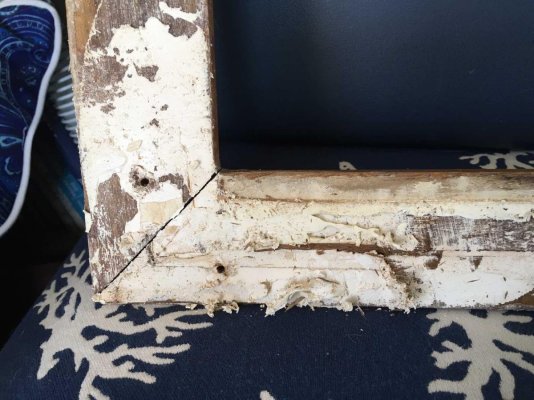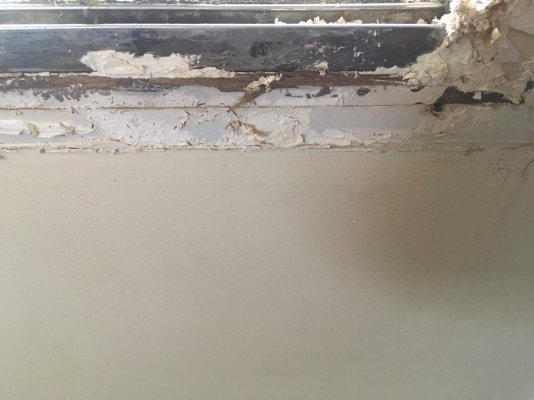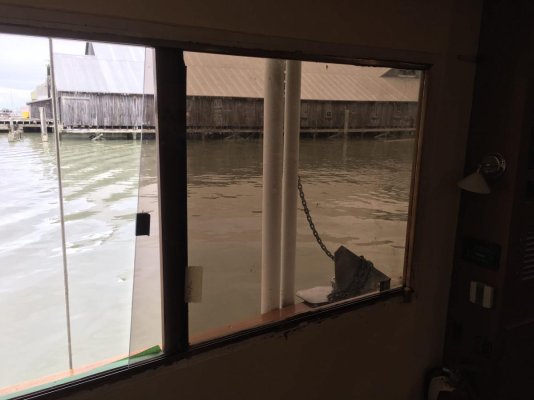Finally fixing my cracked saloon sliding window. Only the bottom of the wood frame together with the U channel track was “caulked” and it was a very difficult material to separate. I think they used 4200. Not certain. The top track is held in with a small amount of caulking and a bit of tape. Barely hanging there. It was a pita to remove.
What product is best for that bottom track? I think the reason a PO used 4200 was to waterproof everything to prevent water egress into the saloon.
View attachment 106727View attachment 106728
Jim
Jim:
Just looking at your picture, I can't be sure that is the inside frame that you removed. It makes a big difference, as, if that is the inside frame, the 4200 (likely 5200) shown is unnecessary, as that frame is there only to hide the inner works.
If that is the outside frame, there has to be a water tight seal between the track and the sill, and when the track overflows with rain, that water can't be left trapped between the track and the frame, as it will get into the material below the track, and it will eventually mess up that outer frame. You need 5200 in that application. You also need a drain from the bottom of the track, a drain that allows the water to drain onto the outside of the house wall. Without an adequate drain, overflow will occur on the inside, causing the inside wall to fail.
Did you have a broken slider, or was the fixed pane the broken one? That made a big difference when I did my aft head window. I wanted to replace the track, as it had aged out at 49 yrs. The velvet like stuff in the track was rotted, so the track had to be replaced. That track and the sliding glass were, on my boat, installed from the inside, so the inside teak frame had to come off along the bottom and at one end. I was replacing the wall covering anyway, because the window had leaked and the plywood to which the wall covering was attached was rotted, along with the sill.
Then I leaned against the fixed pane of glass and cracked it. It was installed against the opening, with 5200, so to get it out, the outside frame had to come off. With everything out, I was able to rebuild the lower sill (rotted) and make it all water tight with Sikaflex 291.
I had previously tried butyl tape, when I replaced a front wheelhouse window, and found that Sika 291 worked considerably better and was easier to apply.
I had the glass panes custom cut from laminated safety glass and was able to get more of the track for both top and bottom at the same Auto Glass store.






